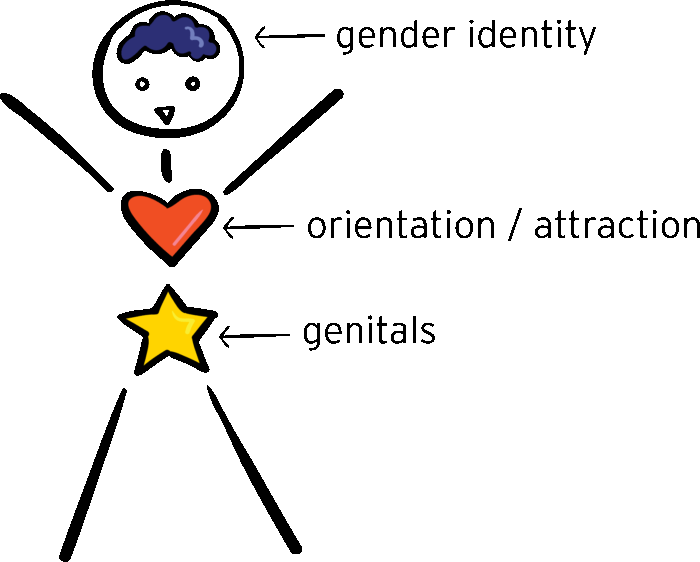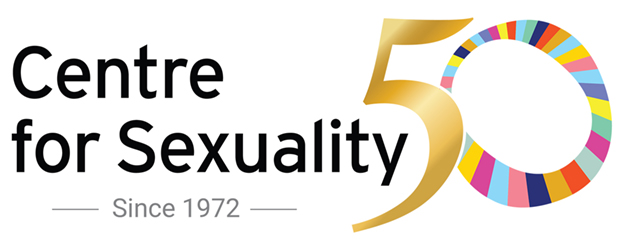Sexual Orientation
Sexual orientation, sometimes just called “orientation” is talking about who people like or fall in love with. It refers to who people are attracted to (or not attracted to). Some common terms you may hear about orientation are: straight, gay, lesbian, bisexual, queer, and asexual. There are many other words people may use to be more specific about who they are attracted to and even how they experience that attraction. Language is constantly changing and words hold different meanings for different people so choose the words that fit best for you.
Some people know from a young age who they like or fall in love with. Other people don’t come to these realizations until their teen years, or even later in life. There is no right time to figure this stuff out and for many, it is a life long journey. We live in a world that assumes most people are straight unless they say otherwise which means 2SLGBTQ+ people may not always see themselves reflected in their families, communities, or in the media. This can make it difficult for you to figure out if you are 2SLGBTQ+ if you don’t have anything or anyone to relate your feelings to. Some people figure out who they like by developing a crush while other people figure it out after meeting or reading about someone with similar feelings to them.

Today, sexual orientation is protected under the Canadian Human Rights Act and the Alberta Human Rights Act.
You can not be discriminated against based on your sexual orientation which means you cannot be fired, evicted or denied services for this reason. Unfortunately, sexual orientation has not always been protected under the law. It was illegal to be gay in Canada before 1969. The Constitution did not protect sexual orientation until 1996 and did not legally recognize same sex marriage until 2005. We’ve come a long way since then and many families, communities, and workplaces are now working to make sure 2SLGBTQ+ folks feel safe and welcome.

